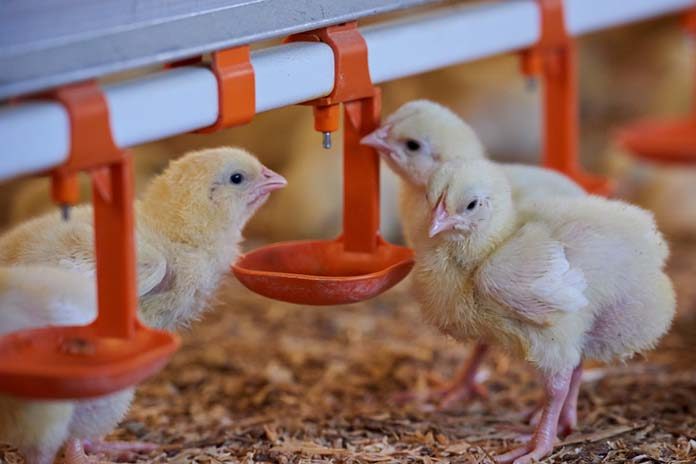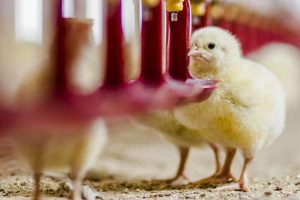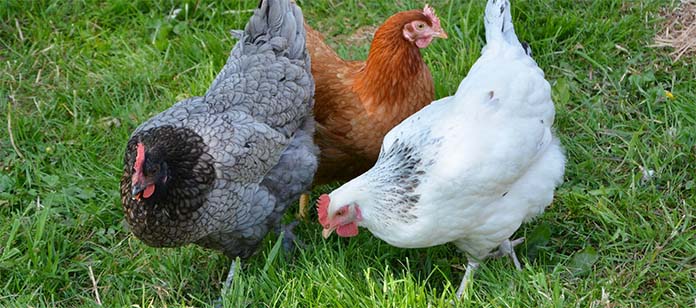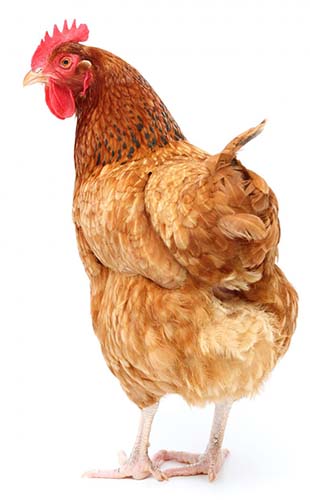
Intestinal health is necessary to maintain efficient and sustainable gastrointestinal tract (GIT) physiology. The GIT has digestive, absorptive, metabolic, immunological and endocrinological functions.
This means that disruptions of intestinal health can affect one to several systemic functions.
Because of the key role of GIT in animal production, the physiological roles of the avian gastrointestinal tract and the consequences of possible alterations have been the focus of decades of research and extensive reviews.
Over the past two decades, this topic has gained even more interest in poultry production due to increasing demands for economic efficiency, animal welfare, food safety, reduction in environmental impacts, and a ban on or avoidance of growth promotant antibiotic use.
There is no doubt that healthy avian guts are essential to optimize digestibility, minimize nutrient excretion, and consequently mitigate the environmental impacts of ammonia, odors, and other gas emissions with health and welfare impacts inside and outside the poultry house that can impact the health and welfare of birds and human workers. High litter moisture and ammonia production may impact the incidence and severity of footpad dermatitis, hock burns, carcass quality defects, and respiratory diseases.
The production of antibiotic free (ABF) poultry is a common trend worldwide, because the use of some growth promotant antibiotics (GPA) has been banned by certain governments in many countries and consumer interest in avoiding the consumption of food products that may contain traces of GPA is increasing in others. For the past 50 years in animal production, GPA have been an excellent tool to control dysbacteriosis and enteropathogens. Despite scientific evidence indicating that GPA could still be used rationally in animal feeding, the market tendencies and the constant negative publicity in the media against GPA indicate that the great majority of the poultry industry will or should implement ABF production to a certain level, due to the perceived marketing opportunities.
Although many poultry companies have years of experience working with the ABF systems, some of them still have difficulties controlling diverse health challenges. However, there are other companies with successful experiences that resulted from improvements in housing and changes in feeding, management, and health programs. The changes used to achieve the environmental control, biosecurity, feed quality, and husbandry level necessary to control the multitude of factors that may affect intestinal health with ABF could increase the cost of production. The ABF systems can still be profitable as long as the prices of the final ABF products can cover the costs of investments necessary to produce these products.
Future ABF production and its sustainability depend on developing a larger understanding and practical application of concepts related to intestinal health that imply complete holistic management of the production system. This introductory paper aims to summarize the main concepts necessary for understanding the broad aspects of intestinal health. The discussion starts by emphasizing the importance of intestinal health to enhancing nutrient digestibility and to preserving normal physiological functions in modern poultry species. These, in turn, help to develop and later maintain an ecological equilibrium with gut microbiota, where the bird is an active host. A short review of factors that may disrupt the equilibrium of gut ecosystems includes examples of details involved with frequently unforeseen consequences. The importance of the effects of corn hybrid and drying temperatures on the feedstuff quality assurance program are one example. Another is how more attention should be placed on guaranteeing good water quality from the physicochemical standpoint, because, it is important for good digestion and can minimize microbial proliferation in the water lines, nipples, and drinkers. One more key factor to keep in mind is that breeder health, nutrition and welfare, as well as incubation conditions are necessary to ensure proper embryo development and therefore guarantee healthier birds. Additionally, some comments will be made about environmental control and daily biosecurity.
One central concept included in any debate regarding intestinal health and ABF production is the potential modulation of gut microflora by using available alternative products like certain organic acids, short- and medium-chain fatty acids, essential oils, phytobiotics, and probiotic/prebiotic (symbiotics). Finally, necessary changes in health programs will be discussed focusing, first, on coccidia and intestinal parasite control and then, on the effects of vaccinations and biosecurity to control other common poultry diseases.
Digestibility and gut ecosystem equilibrium

A common mistake when intestinal health is discussed is to only focus on the control of intestinal disease. Generally, the attention is placed on coccidia or specific enterobacteria like Clostridium perfringens, E. coli, or Salmonella spp. This misunderstanding comes from day-to-day experience in which these are the main health issues observed when a problem with intestinal health is detected or ABF programs are implemented. However, these are, in reality, the consequences, not the causes of the problem. Generally, the true problem is an excess of nutrients in the hindgut which causes the proliferation of these microbes in the hindgut with the consequence disruption of gut microbiome-host equilibrium causing the metabolic, pathogenic or sterile inflammation. The excess of nutrients in the hindgut may be due to either high nutrient levels in the diet or suboptimal digestion.
To explore this concept further, it is necessary to remember that GPA have been the most consistent cost effective tool currently used to control dysbacteriosis. GPA reduce the number and diversity of some microbes and in this way create enteric conditions with fewer bacteria that could negatively affect the intestinal tract, proliferate in the droppings, and consequently in the whole poultry house. However, we need to remember that bacteria, fungi, protozoa and even virus proliferate when there are more undigested nutrients in the hindgut available for their use. Disturbances in the bacterial microbiota, due to this proliferation, result in dysregulation of adaptative immune cells and changes in microbial metabolism that can lead pathobiont microorganisms to become pathogens. Consequently, the issue is not really the microbes that have always been and will continue to be ubiquitous on earth and in the gastrointestinal tract (GIT) of animals. The real issue is a reduction in digestion or an excess of undigested nutrients in the GIT that may occur for many different reasons.
When diets do not contain an excess of nutrients and appropriate digestibility is guaranteed and consistently maintained, it will be easier to control microbes and the diseases they generate. Therefore, phase feeding or increasing the dietary phases currently offered in order to increase the precision of feed formulation according to animal needs is necessary for better intestinal health and ABF production. At the end of each feeding phase, excess nutrients, especially protein and fat, are not well digested or absorbed which allows microbial proliferation in the ceca. With physiological retroperistalsis, these bacteria go back to the ileum and jejunum causing dysbacteriosis and even disease by the production of endo and exotoxins. This problem is more common when the gut microbial communities (MC) have not stabilized yet as is the case with young chickens or turkeys between 2–3 weeks of age. This age period coincides with the transition between starter and grower diets and the outbreaks of intestinal diseases. Making the transition between the starter to the grower diets earlier and more gradually should reduce the problem.
One of the key aspects to improving intestinal health and ABF production is to guarantee that appropriate foregut digestion occurs most of the time. Manipulation of feed granulometry, supply of water with good quality, quality control of dietary fat type and levels and addition of exogenous enzymes can aid to maintain good digestion. Granulometry or particle size of all feed ingredients that stimulates gizzard function. This granulometry is generated in the grinding process or by including small proportions of whole grains, partially broken grains in the mixer or fiber and reduced during the pelleting process. It is well demonstrated that coarse particles modulate the expression of genes encoding important digestive enzymes and nutrient transporters.
Water hardness, alkalinity and basic water pH disturb crop pH and consequently reduce the first phase of digestion. The crop plays an important role in phytase and other enzyme activity. When the pH value of the crop is above 6.5 the enzyme activity can be reduced 10–15% compared to the effectiveness observed at pH 4.5–5.5. Organic acids in feed or water create acidic conditions in the crop of broilers, but not in layers. Dietary calcium levels higher than the requirement for each age group and productive phase can be deleterious to intestinal health since it may chelate nutrients, reduce enzyme activity, and promote proliferation of Clostridium bacteria. Dietary fat type and level can affect digestion and microbiota and coccidiosis can also affect the digestion of many nutrients, but specially fats. However, it is important to maintain a minimum of 1% fat in the diet to stimulate gastric function and slow release of digesta from gizzard to the small intestine. Exogenous enzymes are the second best tool to control bacterial proliferation in the intestines. Phytases, carbohydrases and proteaes have been widely adopted due to their cost saving impact on diet formulation and as productivity enhancers. A secondary effect of these enzymes is their positive impact on gut MC. Exogenous enzymes reduce microbial proliferation by reducing the undigestable components of feed, phytate, the viscosity of digesta or the irritation to the gut mucosa that causes inflammation. Enzymes also generate metabolites that promote microbial diversity which helps to maintain gut ecosystems that are more stable and more likely to inhibit pathogen proliferation.
Feed and water quality
Optimum digestibility can only be obtained when diets are made with good quality feedstuffs. To avoid intestinal health problems, poultry companies, especially those with ABF production programs, need to place more emphasis on avoiding levels of mycotoxins in feedstuffs and rancid fats that exceed recommended limits. Mycotoxins are able to compromise several key functions of GIT resulting in decreased nutrient absorption by decreasing available surface area, modulation of nutrient transporters, and loss of barrier function. Some mycotoxins facilitate persistence of intestinal pathogens and the likelihood of intestinal inflammation. Mycotoxins, per se, may not be the cause of an intestinal health problem, but may predispose birds to one. Consequently, measures need to be implemented by feedstuff providers to minimize grain damage and conditions that could increase mold or insect spoilage.
Rancid fats and oils should be rejected since they have been related to pathogenesis of enteric diseases. Diets with a peroxide value of 74 or greater should be rejected, because they result in poorer feed conversion. Proper fat storage conditions in tanks and transportation lines should be evaluated frequently in order to control rancidity development within the feed mill. The addition of antioxidants and mycotoxin binders to feed can reduce the effects of mycotoxins and peroxide and it is more necessary in ABF programs, because these programs are more dependent on ensuring optimal digestion as a way to maintain a healthy microbial ecosystem in their birds.
Quality assurance during soybean meal processing is particularly critical, because there are negative effects from undercooking and over cooking soybeans on digestion. Undercooked soybeans have higher antitrypsin factor concentrations whereas overcooking decreases protein digestibility, as it does with other high-protein feedstuffs. High concentrations of trypsin inhibitors in broiler diets have been directly correlated with rapid feed passage and dysbacterioris. Particle size of soybean meal is important as well. Coarser particle size, close to 700–900 μm, favors higher digestion of soybean protein and minimizes the negative effects of antitrypsin factors.
In the case of corn, genetics, moisture of corn during harvest, drying temperatures, and storage conditions can play a role in the formation of retrograded starch and reduction on salt-soluble protein which decreases digestibility. Drying can also affect the physical traits of corn grains, particle size produced during grinding, and, in turn, the feeding behavior of poultry. Grain drying may also be an important determining factor in the variability of nutrient availability to animals and their susceptibility to intestinal issues. In summary, every component of feedstuff should be evaluated for factors that might affect its digestibility, and greater effort should be placed in guaranteeing the production of high quality feed.
Good water quality is also important for proper digestion so its physicochemical characteristics should be measured, controlled and improved at the farm level. The pH should be maintained slightly acidic, between 5.5 and 7, because basic water reduces the activity of most digestive enzymes. For this reason, drinking water with high levels of carbonates or other salts that increase the alkalinity and hardness can cause problems. High concentrations of salts and solids in the water and basic pH generally favor the production of biofilm and endotoxins in water lines and drinkers due to the proliferation of algae and microbes. Biofilm and salts not only contribute to the degradation of microbiological parameters of water, they can also contribute to clogging issues in nipples and consequently affect water availability for birds. Reduction in water intake, caused by any means, adversely affects gut physiology, digestion and live performance. Water sanitation with chlorides, peroxides or other products can aid to minimize growth of bacteria and algae.
Water deprivation or feed withdrawal can cause intestinal problems, during grow out and should be completely avoided in ABF programs. After 5 or 6 h of feed withdrawal, gut mucosa traits shift making chickens more susceptible to mucoid enteritis. Feed withdrawal stimulates mucin production by goblet cells in the intestinal mucosa, and extra mucin is avidly used by bacteria that irritate the mucosa which generates the production of more mucus and inflammatory reactions. The disruption in mucus properties also facilitates the adherence of entero pathogens and coccidia infection.

Alternative products to modulate gut microflora
Some feed additives and minerals can help maintain healthy MC in all regions of the gut even under circumstances that normally threaten intestinal health like feed withdrawal, intestinal infections with coccidia, and heat stress. Their use in such situations can even maintain similar normal diversity of MC observed in control groups of chickens. Therefore, these products are an additional tool for effective ABF production avoiding gut health issues.
Alternative, new feed additives classified as probiotics, prebiotics, enzymes, organic acids, and herb extracts can also be helpful. Probiotics introduce desirable microorganisms into the GIT. Prebiotics promote the growth of desirable bacteria in the GIT whereas organic acids cause the inhibition of bacterial growth. Enzymes are used to help eliminate the antinutritional effects of phytate, water-soluble poly-saccharides, and/or change substrates to improve proliferation of some beneficial MC. The phytobiotic or phytogenic effects vary depending on their composition. They can be bacteriostatic or immune-stimulating. One category of phytobiotics are the essential oil (EO) blends. These products are mixtures of phytochemical compounds, such as carvacrol, thymol, and cinnamaldehyde among others, that have selective antimicrobial properties. The use of some specific EO blends has been shown to have efficacy towards reducing the colonization and proliferation of Clostridium perfringens and controlling coccidia infection and, consequently, may help to reduce necrotic enteritis.
Each type of product has demonstrated varied efficacy when administered independently or in combinations, but some evidence suggests that the combined administration of prebiotics and probiotics might be the more effective strategy. The combined use of probiotics and prebiotics has been called symbiotics. Because these products promote the development and diversity of MC, they are called eubiotics. Most of these products meet the specifications required for all ABF programs, but none of them can be considered a “silver bullet”. It is important to point out that each of the groups discussed is a big category, as broad as antibiotics; consequently most eubiotic products have unique characteristics and effects. Only appropriate testing, use, and rotation of these alternative products can guarantee success with their use in a sustainable ABF program.
The house environment and biosecurity
House conditions like optimum temperature, air velocity, and relative humidity according to the age, phase of production, size of the birds and external environmental conditions are important for health, poultry productivity and control of pathogens. With broilers, layers, turkeys, and ducks, environmental stress due to heat or cold, very dry or very humid air, or drafts can alter their feed intake patterns and intestinal motility thereby causing reduced digestion and the ensuing gut problems. At any flock age, heat stress and drastic temperature variations should be avoided. All environmental stresses deleteriously affect the immunological system of broilers, perhaps to the extent that they cannot maintain microbes inside their GIT lumen and translocation of bacteria to the bloodstream can occur.
High stocking density has been associated with a susceptibility of birds to necrotic enteritis. However, the lack of proper ventilation and cooling capacity that can occur under such conditions of high stocking densities could be the main cause of the problem, rather than broiler density per se. In flock management, opening space to the flock during the brooding period, between the first and second week of age, is important to avoid high densities with excessive competition for feeder, drinker and physical space that cause stress and more contact with excreta and moisture. Good house ventilation is key for intestinal health to minimize condensation, litter moisture, and caking. Keeping litter moisture below 30% is the goal, but it is also important that litter does not become too dry. Depending on the results of previous flocks, it could be important to change litter more frequently, apply litter treatments like windrowing, increase the downtime between flocks, and/or implement the use of acidifiers as litter amendments, since it has been proven that litter management regimes affect the chicken GIT microbiota.
Lighting programs may also impact feed intake behaviors, gut motility and digestion. Generally, lighting programs that include light intensities lower than 10 lx and 4–6 hours of total darkness per day have improved feed conversion ratios, most likely due to slower feed intake and better digestion. Intermittent lighting also improves the resilience of broilers during the peak phase of sub-clinical necrotic enteritis infection.
Health programs for intestinal health
For intestinal health, especially with ABF production, preventing coccidiosis and necrotic enteritis are the main concerns. In cases where no anticoccidial medications are allowed, coccidiosis vaccines and litter management are the main ways to control Eimeria spp. In many countries, cocci vaccination for broilers has been used for years in traditional poultry production systems and in new ABF programs. It is known that cocci vaccination can help to reduce anticoccidial resistance and displace field oocysts for some less pathogenic ones while stimulating bird immunity. The success of cocci vaccination programs is based on making sure that all steps for proper application are followed. In this special issue, the importance of coccidian control will be discussed in detail by Dr. J. Smith.
However, in fact coccidiosis control should not be the only concern of health programs for ABF production. Control of other intestinal parasites, worms and poultry diseases that impact intestinal health and/or bird immunity are necessary throughout the whole production cycle. Proper vaccination of breeders and hatchlings can help to prevent Newcastle, infectious bursal disease, and infectious bronchitis. The systemic infection of these virus also affect intestinal health. Chickens that had considerable resistance to Salmonella typhimurium and Escherichia coli infection by early devel- opment of a native intestinal microflora shed these bacteria following aerosol exposure to Mycoplasma gallisepticum and/or infectious bronchitis virus. Specific vaccines for Salmonella or E. coli can be applied to breeders to minimize the impact of these common pathogens in the progeny.
In ABF production, it is essential for breeder flocks and grow out farms to be free of Mycoplasma gallisepticum and Mycoplasma synoviae. At large poultry facilities, daily, functional biosecurity practices are extremely important to ensure intestinal health, because immunity responses alter feed intake and GIT function. Necessary biosecurity practices include, but are not limited to, bio-exclusion (limiting visitors and entry of vehicles and equipment that visit other poultry farms) and bio-containment, isolating houses, and controlling insects, rodents and the entry of wild birds and other animals to the houses.
Improving breeder health and hatchery conditions

Nutrition and feeding of broiler breeders are fundamental for adequate development of their progeny. Embryo development is totally dependent upon egg nutrients deposited by hens. Specific nutrients such as vitamin D, trace minerals, carotenoids, and fatty acids seem to play key roles in immunity and gut development. Hens also affect embryo nutrition and development by eggshell properties, such as egg porosity and shell thickness, which determine conductance.
Eggshell conductance determines the capacity of eggs to exchange gases and water vapor, consequently affecting embryo utilization of yolk and nutrients. These physical factors, especially the capacity to obtain oxygen, limit the type of metabolism and rates of tissue development and embryo growth. Oxygen supply is especially important during the last three or four days of incubation, the period of peak oxygen consumption when development of many tissues, including GIT, bones and muscles, is at its fastest rate. Finally, breeders can transfer good and bad intestinal microbes and immunity to their progeny. Companies practicing ABF programs should make sure that intestinal health of their breeders is adequate and that their vaccination programs are effective to prevent problems in the progeny.
Research findings have indicated that elevated temperatures during the last phases of incubation reduce GIT tissue mass and enzymatic activity. In several experiments, our research group demonstrated that elevated temperatures, reduced the relative sizes of the proventriculus, gizzard and intestine by 13, 14 and 16%, respectively. The length of the intestines at hatch was also reduced. Similarly, we observed that the activity of the maltase enzyme was dramatically lower in chicks produced in overheated incubators compared to chicks incubated at optimum eggshell temperatures. These effects of elevated incubation temperatures have implications for the digestive capacity of the chicks and probably in the incidence of intestinal problems and resistance to parasites.
Suboptimal incubation tends to increase the hatch window by causing some chicks to hatch either too early, 36–48 h before pulling chicks out of hatchers, or too late. Both situations cause problems with the development of the lymphoid tissue associated with the gut and general immunity. Chicks without access to feed and water for 48 h post-hatch showed a delay in all immunity responses in the ceca and colon and on the colonization of lymphocytes in the bursa. This causes reduced immune activity during the first two weeks of life when the majority of primo vaccinations are applied and chickens have their first contact with potential enteropathogens.
Conclusions
Intestinal health impacts poultry productivity, animal welfare, food safety, and the environmental impact of poultry production. ABF programs for poultry meat production are becoming more common. To make ABF programs successful, more attention needs to be given to the whole production system, not only on feed, feed additives or control of a couple enteric pathogens. Housing, management, water quality and biosecurity at both the breeder and grow out levels are critical in ABF production. Even hatchery conditions should be improved to make ABF programs successful and maintain good intestinal health.
On the nutritional side, precision in feed formulation and phase feeding should be used. Feed processing using coarse grinding or whole grains is necessary to stimulate gizzard function and peristalsis. More stringent feed quality assurance programs should be implemented. The use of exogenous enzymes play a key role in improving digestibility and in mitigating the negative impact of some antinutritional components.
Finally, feed additives known as eubiotics, can be an important, alternative tool to GPA to modulate microflora whenever any of the factors reviewed above cause bacterial proliferation that can reduce the productivity in ABF programs.

















